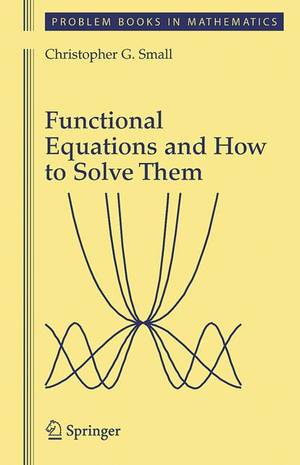Functional equations are in our environment
Analisi Matematikoa saileko katedraduna eta Matematika mintegiko burua
Nafarroako Unibertsitate Publikoa
Askatasuna BHI institutuko Matematika irakaslea eta NUPeko Analisi Matematikoa sailean irakasle laguna
Functional equations: some examples
We will begin with some illustrative examples:
1. We will contemplate some basic stages of a person's life:
(F) Birth
Finding a Job (II)
(III) purchase of housing
(IV) marry
It is clear that the last three stages cannot be completed without the first (birth). The last three can occur in any order.
On the other hand, you can join several basic stages and create a global stage that encompasses all of them. That is to say, the stages of search for employment and purchase of housing can be joined in a broader stage called arraigo. Now, from this example, we will try to obtain a mathematical expression; the realization of stage b after stage a, we call F(a,b) ( a and b and X , where X is the set of all basic stages). We will accept F: X x x X B X X that meets the X permutability equation (in other areas, migrability equation):
F(a,b),c) = F(F(a,c),b), b,c and X for all.
The truth is that this functional equation is quite known in other branches of science (not only in mathematics):
For example, in economics. Suppose we have an amount of money C, a capital, in the bank, and after a period we have to pay a tax (to give to Hacienda a proportion of the remaining money of the box). If starting from a capital C they charge r 1 C, being r 1 e (0.1), the amount that will remain in the bank will be R(C,r 1 )=(1-r 1) C. If we have to pay two taxes, we will soon realize how the amount that would remain in the bank will not vary according to the order in which we are paying the taxes as follows:
R(R(C,r 1 ),r 2 ) = (R(R(C,r 2 ),r 1 ), C,r 1 ,r 2 > 0 and r1,r 2 e (0.1).
Computer science. It appears in computer algorithms that must determine the jobs that computers must perform.
2. We want to make trips by plane. To go from an airport called x to another one called, we have to pay P(x,y). In addition, departure airport fees, T(x), must also be paid, so that the price of the trip is P(x,y)+T(x). Let's assume that according to the agreed price system the value of roundtrip trips should be the same, that is, P(x,y)+T(x) = P(y,x)+T(y), where x e and are airports.
In this case we will say P: X x x X Calculation [0,+·) meets the circuit equation:
P(x,y)+P(y,z)+P(z,x) = P(x,z)+P(z,y)+P(y,x), x,y,z and X
If we want to measure the difference between the prices of roundtrip trips, without taking into account the rates of airports, we must analyze the function F(x,y) = P(x,y)-P(y,x), in this case F: X X X\ R fulfills the functional equation of Sincov:
F(x,y)+F(y,z) = F(x,z) for all x,y,z and X.
3. A research group based in the Computer Country1 can achieve level x excellence levels through the work of local researchers. The people of Chiffreland, who are also researchers, will achieve a level of excellence and if the team works on their own. However, collaboration between both teams allows achieving levels of excellence E(x,y) and, probably, reaching levels higher than the x and y of each group. We must also recognize that the level of excellence E(x,y) achieved with joint work will be the maximum attainable. If one of them reached this level without the support of the other, even if he joined the other it would not improve that level of excellence. That is, collaborating with the other group would not mean raising the level of excellence of research. This situation can be expressed as follows:
E(E(x,y),y) = E(x,y) = E(x,E(x,y)),
A: The function X x X B X is called the increment function, where X represents all levels of excellence. This equation is quite studied in the special literature and is called a consensus equation because it is related to the usual problems presented in the studies of Social Selection.
Mathematical research by functional equations
When a mathematician listens to the expression functional equation, he immediately comes up with concepts such as differential equations, partial derivative equations or integral equations. This is easy to understand, since this type of equations have their own well-developed and consolidated theory, and we can also affirm with certainty that this mathematician has learned in his university studies at least some of the concepts mentioned, if not all of them.
But the expression functional equation encompasses a broader set of relationships between equations or functions.
In the resolution of the examples presented in the portal, these examples will not be analyzed, at least initially, with the techniques used by the theories of partial derivatives, differential equations or integral equations. What's more, a person who works in functional equations is found with equations little or nothing related to differential equations, integral or partial derivatives, and those he finds are very similar to those that appear in our examples.
What happens is that there is no consolidated and extended mathematical theory for the learning of these functional equations (which are of more general and broad meaning), although there are classical studies and works (unfortunately or fortunately are few works).
An interesting example or mention must be made: in this topic of functional equations, as has already been commented, there is little bibliography. Moreover, the techniques used for the study of equations with multivariate functions, such as F(x,y)+(F(y,z) = F(x,z), differ radically from those used for the study of functional equations with monovariable functions such as f(x+y)=f(x)+f(y).
The normal thing is that when a researcher solves an equation of this type, he communicates the discovery in a specialized magazine using basic techniques, or presents it as a problem of resolution in a magazine specialized in solving problems, that is, in the International Olympiad of Mathematics. When a problem of this type is presented in an international mathematical olympiad, participants -- excellent students among others- launch all their skill and imagination to solve these new problems for them, and often develop new techniques. Sometimes, the collection of resolution procedures used by students in the mathematical Olympics is a huge resource for those who work on this subject. As we already have, it must be said that one of the most outstanding books on this subject is the one written by the coach of the Canadian Olympic Mathematics Selection. He has ordered and compiled the techniques used by the best and has obtained an excellent book on functional equations.
Final words and a gift problem
This type of equations appear in our field of research and we publish articles in specialized journals (abstract mathematical analysis, theoretical computation, mathematical economy or social selection).
We are working on it and we can say that, despite being a line that is not worked too much among mathematicians, it is not of little interest either. For this reason, we have dared to write this note, trying to highlight this line of research. Finally, if there is any reader who is not yet satisfied, we present the second problem of the Mathematics Olympiad held in Santander: "Determine all real functions f:R R of a single variable that meet the functional equation f(y)(x-2)+f(y+2f(x)=f(x+y f(x))), x,y e R."
This research branch is part of the research project MTM2012-37894-C02-02.
1 We have had to use this imaginary name because thanks to the broad vision of politicians today there are no research groups.









